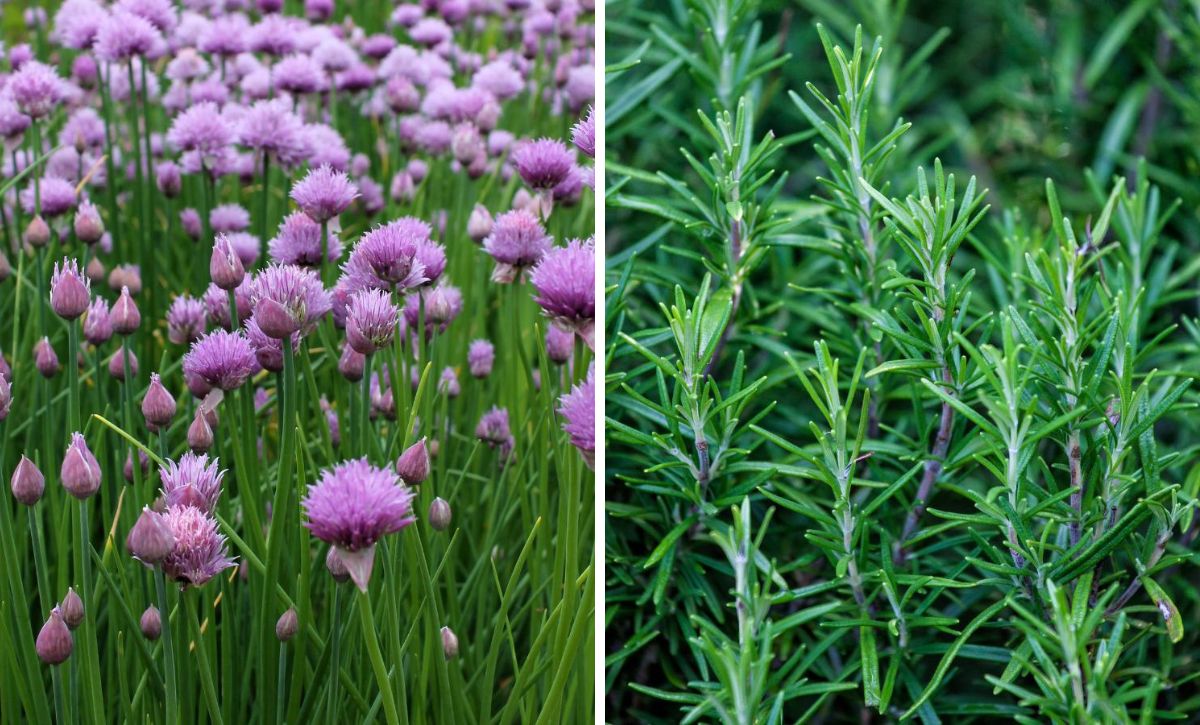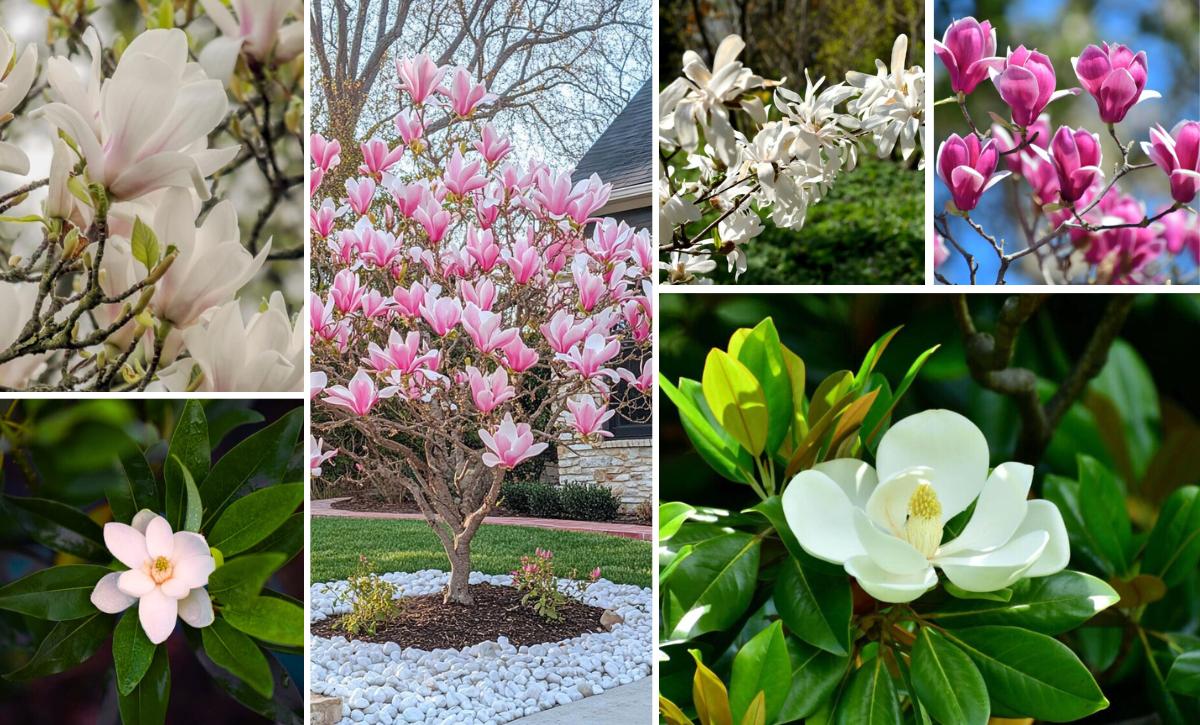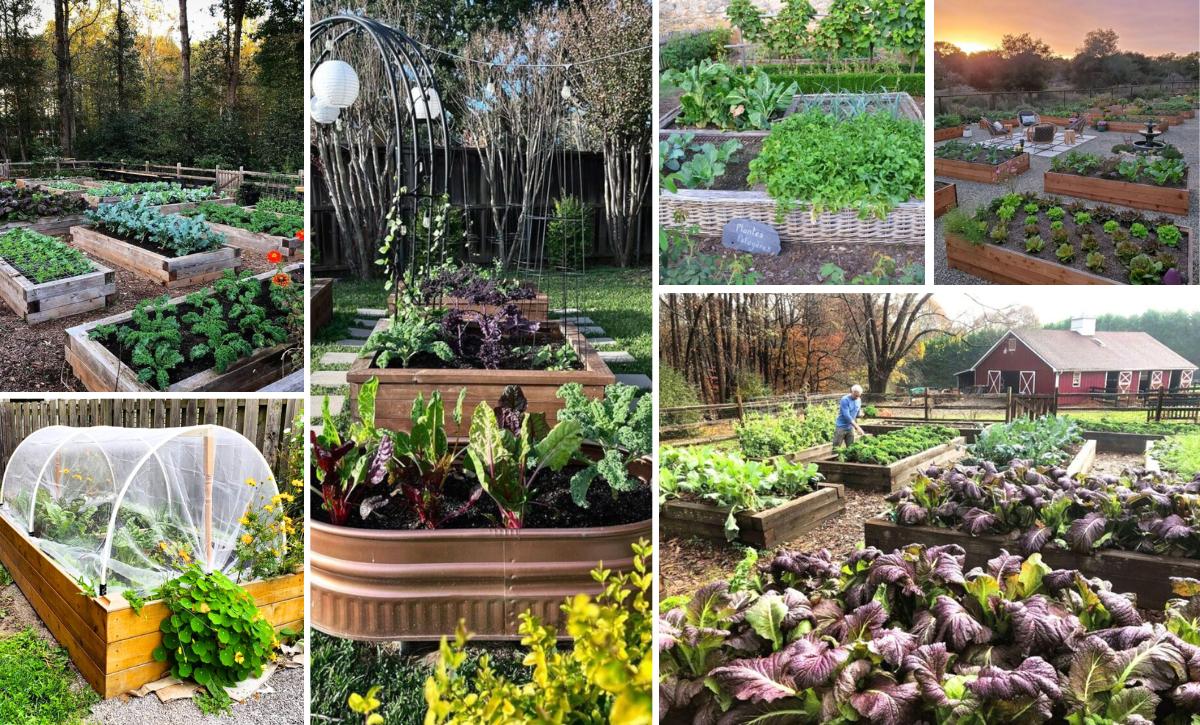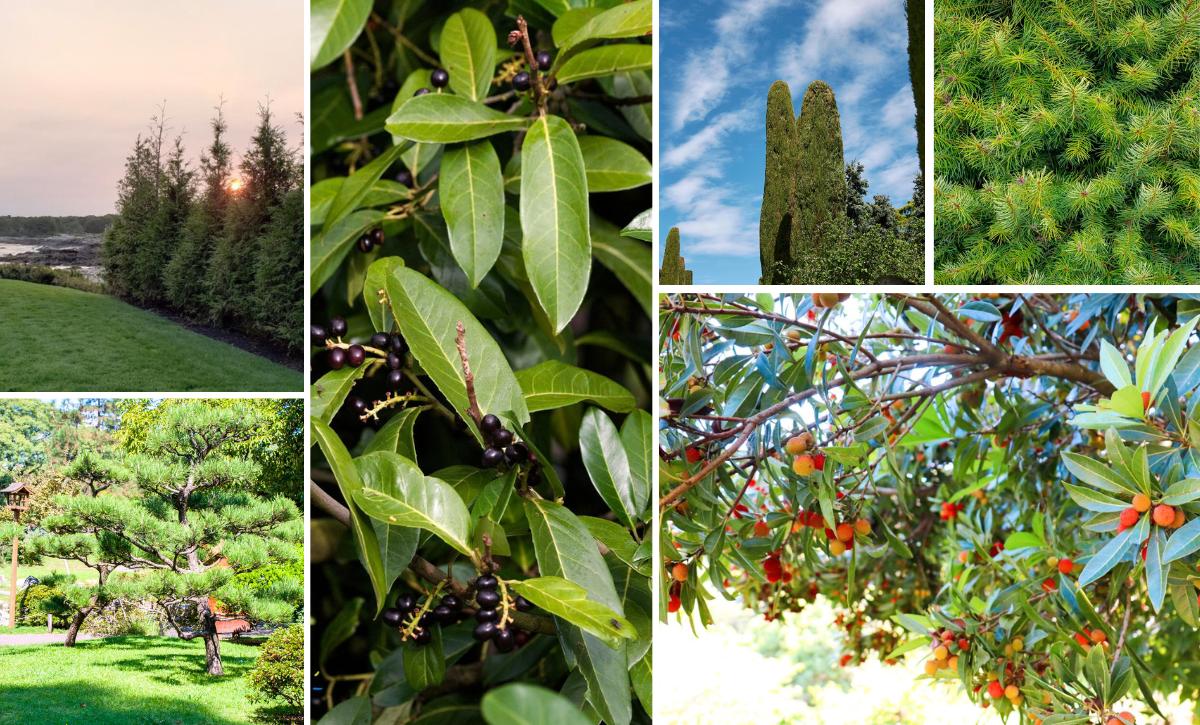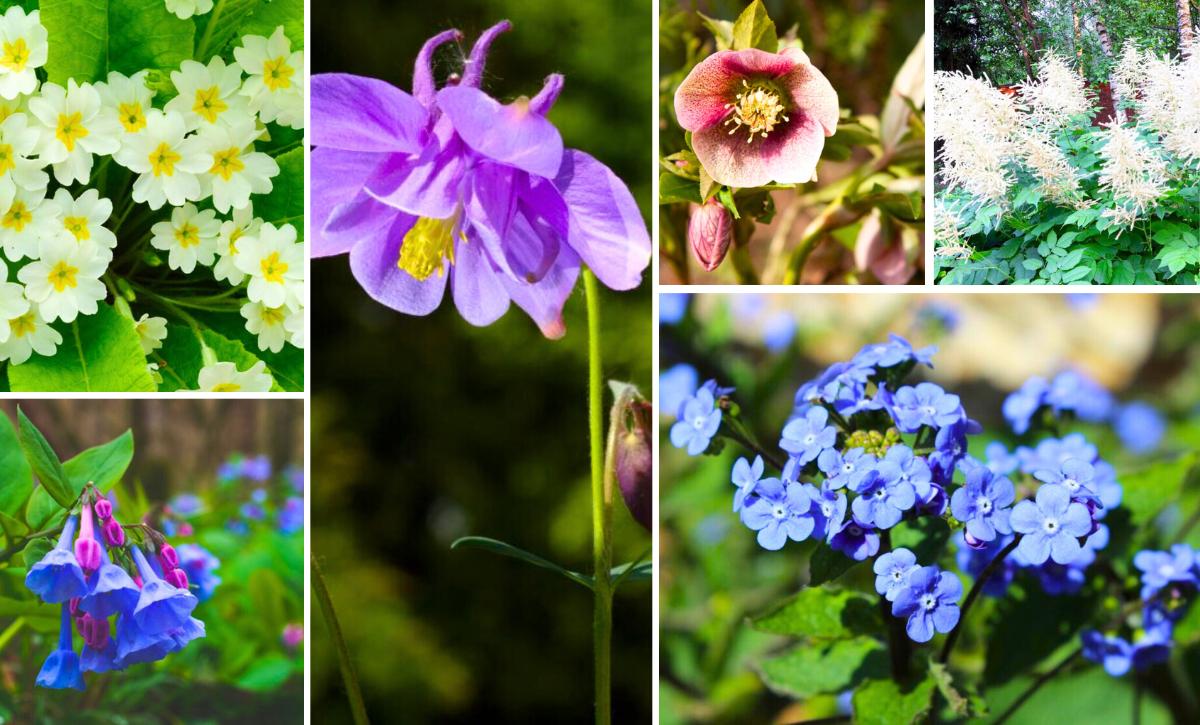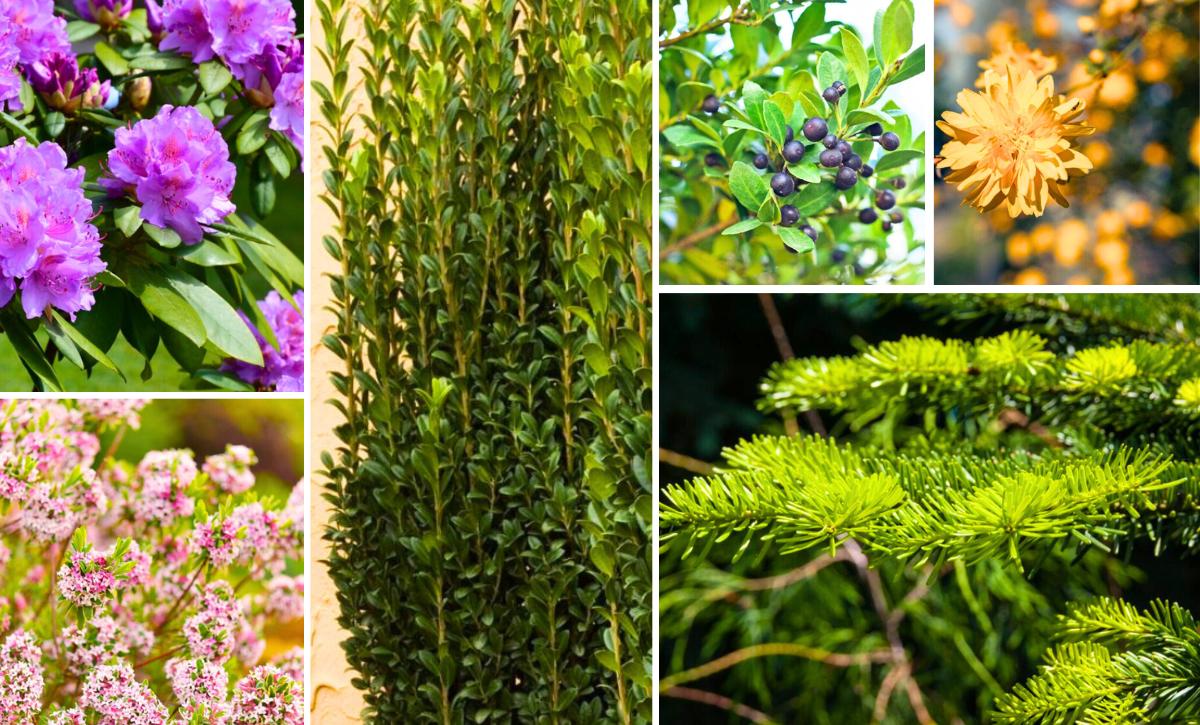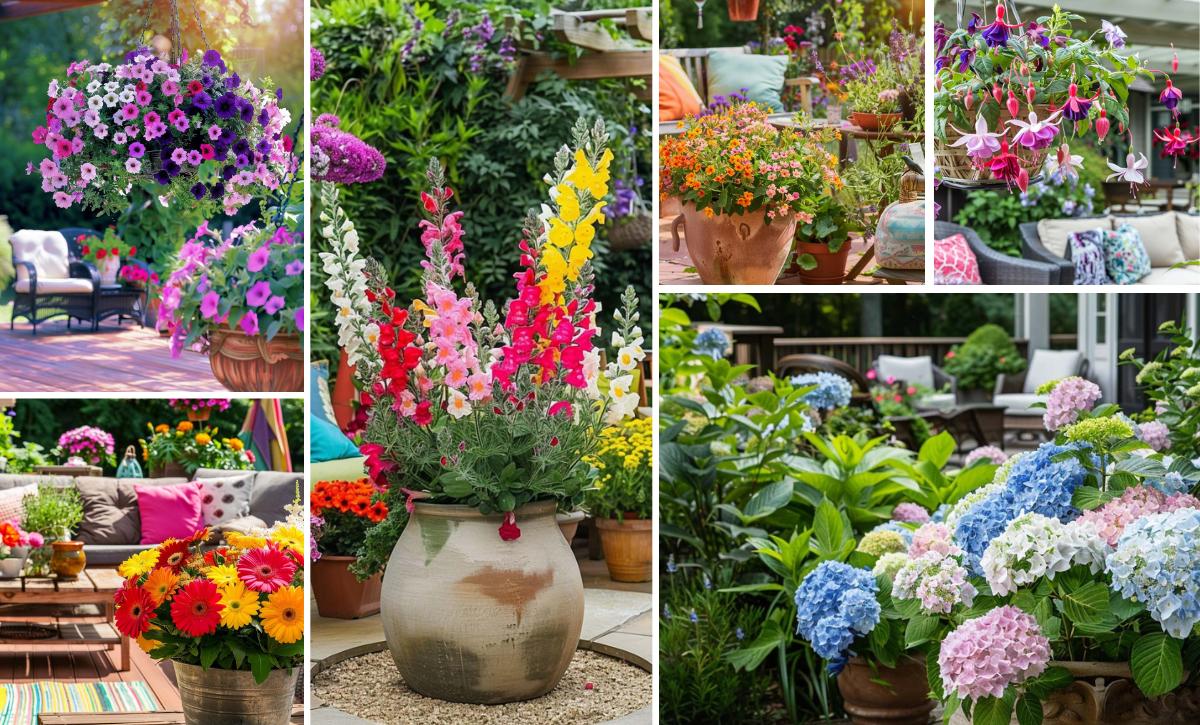Hibiscus shines with beauty throughout the summer, and growers do everything possible to ensure their plants are healthy and pest-free. However, issues may arise, and you must care for them to save your plants.
The Hibiscus belongs to the Malvaceae family, and it’s a remarkable herb suitable for container and in-ground gardening.
There are numerous varieties, including hardy hibiscus and tropical hibiscus varieties. The needs of each variety are paramount since some species can’t flourish in certain places.
In this article, we’ll discuss 7 hibiscus diseases and pests, how to identify them, and their treatment methods. Additionally, we’ll provide you with the best prevention methods to save you the time and effort you would use to deal with these pesky issues.
Let’s take a look.
7 Hibiscus Diseases
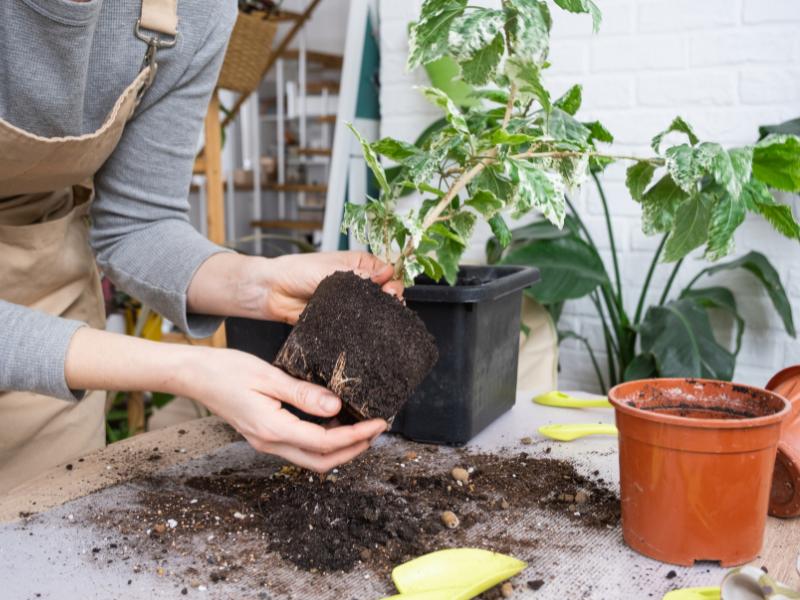
Hibiscus are generally troubled by diseases such as root rot, bacterial leaf spot, powdery mildew, botrytis blight, rust, and wilt disease.
In this section, we’ll examine the symptoms of each disease and how to solve them.
1. Root Rot
Generally, root rot is the most common plant disease, which also applies to the hibiscus plant. If you are a houseplant grower, this notorious disease being on the list shouldn’t come as a surprise.
Water stress is the leading cause of root root, and it occurs when soil becomes wet for too long. Most plant enthusiasts actually prefer hibiscus plants since their watering needs aren’t much.
However, low watering needs also lead to a high risk of overwatering the plants. The Phytophthora fungus species are responsible for root rot, and they start to appear once the soil becomes waterlogged.
Air can’t circulate in the soil since all the air pockets have been clogged by water. Eventually, the roots stop breathing. Their structure significantly changes, and they lose their original structure.
Signs of Root Rot
Some common indicators of root rot include the yellowing of leaves and their subsequent death. Once you notice such signs, you need to check the root system. Healthy hibiscus roots usually are solid and white.
Treating Root Rot
First, you need to remove your hibiscus from the container or soil.
This will be relatively simple when dealing with a potted hibiscus plant. Ensure you don’t use too much force while removing your hibiscus plant to avoid further damage to the already weak plant.
It would be advisable to loosen the soil around the plant using garden tools and then remove it gently. The next thing you need to do is dry your hibiscus. However, ensure it doesn’t dry out entirely since it can lead to more complications and even death of your plant.
Place your hibiscus plant in a shady spot for around 30 minutes to dry.
Fungicides don’t work on rotten roots, so they won’t help here. Use sanitized shears or pruners to cut off the affected roots.
You can apply fungicide to the remaining healthy hibiscus roots once you are done with pruning. Plant your treated hibiscus in a fresh medium, and ensure you don’t overwater it again.
2. Botrytis Blight
Botrytis blight, also called gray mold, is a common fungal disease that forms on hibiscus plants’ leaves, flowers, and buds.
The disease is caused by the fungus Botrytis cinerea, and older hibiscus flowers are more prone to its attack.
Signs of Botrytis Blight
Infected flowers are usually coated in grayish, fuzzy lumps and get brown, papery blotches.
You can also notice some brown patches resembling targets on the hibiscus leaves.
Treating Botrytis Blight
Using proper sterilization techniques will significantly reduce the risk of infection. This includes cutting off decaying or dead flowers and trimming the plants.
First, dry off the infected areas before cutting off the diseased tissue. Please put them in a plastic bag and dispose of them.
Ensure you don’t water over your hibiscus leaves. Incorrect spacing is another factor that contributes to the development of Botrytis blight. Ensure there’s enough space between your plants to improve air circulation.
You can also treat this disease using chemical solutions, but ensure you pick products with registered substances. Refer to the product’s label for indoor use guidelines, safety warnings, and dose recommendations.
3. Powdery Mildew
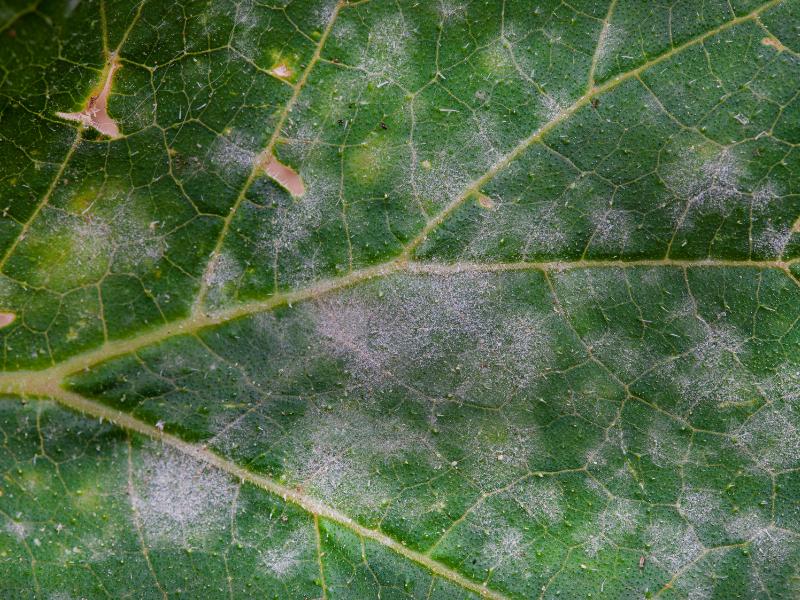
Many gardeners fear when they see a white powder substance on hibiscus leaves. Powdery mildew is a fungal disease that develops on warm days and cool nights in early autumn and late summer. The disease doesn’t necessarily harm your plant; it’s just awful-looking.
However, powdery mildew can affect the plant’s health if left untreated.
Signs of Powdery Mildew
The most common sign of this fungal disease is powdery white growth on the leaves. This is during the early stages of the infection.
The disease spreads more and more as your hibiscus matures if you don’t treat it.
Over time, the white spots turn gray, significantly increasing in size, covering the entire leaf surface.
Stunted growth is another frequent indicator of powdery mildew disease.
Treating Powdery Mildew
Using chemical fungicides, you can quickly eliminate this problem, but this should be your last resort!
You can employ other methods to treat powdery mildew before resorting to chemical fungicides.
It would be best if you stopped feeding your hibiscus plant before you started using any of the solutions listed below.
One excellent natural solution for eradicating powdery mildew is neem oil, which works almost every time.
Dilute 2 tbsp of neem oil in 3.8 L (1 gallon) of water for optimal results. Put your solution in a spray bottle and apply it to the plant weekly until the disease is totally gone.
Baking soda is another natural solution you can use for this problem. Dilute some few drops of vegetable oil and 1 tsp of baking soda in 4 cups of water and spray the solution over your hibiscus leaves.
4. Bacterial Leaf Spot
Bacterial leaf spot is caused by the Pseudomonas cichorii bacteria, and it’s a disease that often attacks hibiscus plants.
The Pseudomonas cichorii thrives in rainy and wet climates and is spread through splashing water.
Signs of Bacterial Leaf Spot
Lesions on the hibiscus leaves are the most common signs of bacterial leaf spot.
These lesions are usually brown with black margins and are encircled by a yellowish halo.
Treating Bacterial Leaf Spot
Removing the affected leaves is the only way to treat bacterial leaf spot. First, use bleach or a similar sanitizing solution to clean your cutting tools.
Cut the affected leaves and place them in an air-tight plastic bag. This is a very crucial step since the Pseudomonas cichorii bacteria can survive on dead leaves. Therefore, leaving them on the ground won’t stop them from spreading.
Properly dispose of the diseased leaves to avoid further spread of the disease.
5. Rust
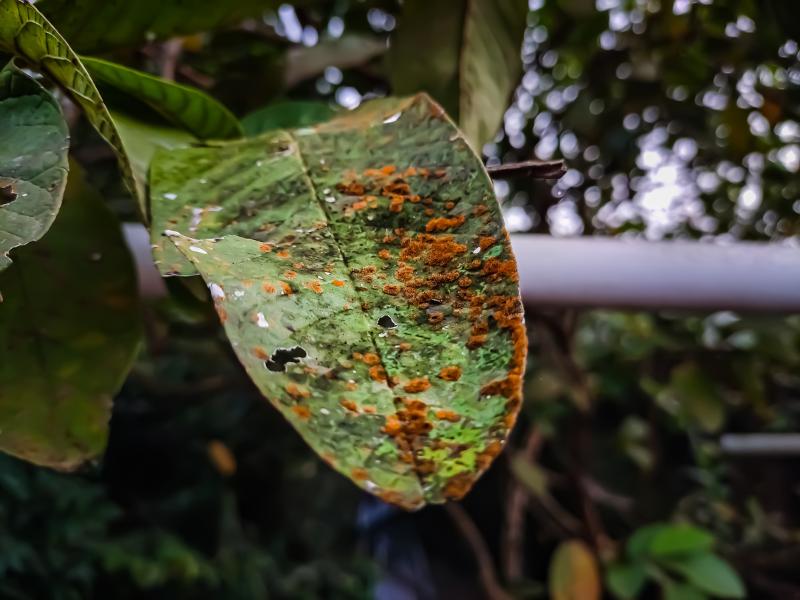
Rust is caused by the soil-borne fungus Puccinia malvacearum, and it’s a prevalent disease in the Malvaceae family’s species.
The fungus responsible for this disease can survive harsh winters, spreading fast and affecting the whole plant.
Water encourages the spread of this disease, making it even harder to treat.
Signs of Rust
Your hibiscus plant will display yellow or orange spots on its leaves if it suffers from rust disease.
The first leaves to be affected are the lower ones. The hibiscus stem may also exhibit brown spots.
The undersides of the leaves also become covered in pustules (reddish-brown bumps) as the infection spreads.
The hibiscus leaves will develop holes and likely die if the infection is severe.
Treating Rust
Once this disease progresses, it becomes challenging to treat it. Remove the affected leaves and treat the hibiscus plant with a fungicide once you notice orange or yellow spots.
If available in a nearby agricultural store, you can also use custom fungicides made specifically for rust disease on ornamental plants.
Treating the affected parts with fungicide protects new growth.
If chemical solutions aren’t your preference, try preventing the disease from spreading. Dispose of the plant if the infection is severe.
6. Wilt Disease
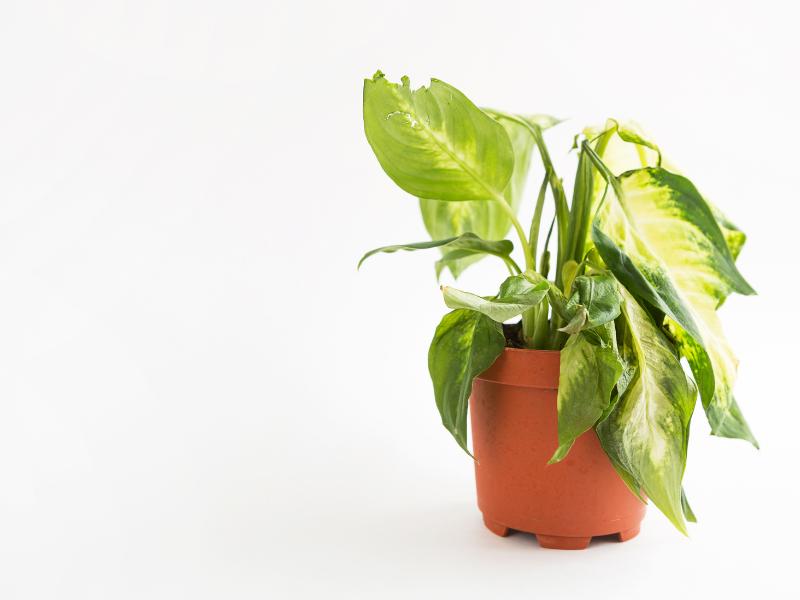
Wilt disease is a common problem in many plant varieties. It is caused by the Verticillium and Fusarium species of fungus.
Some people confuse this disease to root rot, but they are far from similar.
Root rot is usually characterized by the yellowing of leaves. However, if you notice your hibiscus leaves are shriveling and not turning yellow, you are probably dealing with wilt disease.
Signs of Wilt Disease
The leaves of a hibiscus plant usually retain their original green color when it has wilt disease. As the plant wilts, the foliage slowly turns deep green, brown, and black.
Your whole plant, or at least half of it, will have wilting leaves if it has been affected by wilt disease. So if you notice one wilted leaf, that’s not wilt disease!
Treating Wilt Disease
Saving an in-ground hibiscus plant is quite challenging, especially if the wilt disease infection is severe.
This disease can’t be treated by chemical solutions; no products are on the market. Ensure you dispose of the infected plants and let the soil rest for at least 5 years.
If your hibiscus plant is potted, mist it regularly and don’t place it in direct sunlight. Never fertilize, repot, or prune diseased plants.
7. Dieback Disease
This disease is caused by bacteria or fungus entering the hibiscus stem via a wound. These wounds can be created accidentally as we prune our plants.
Signs of Dieback Disease
This disease is also characterized by wilting.
However, unlike the wilt disease, whereby the whole plant or one side wilts, dieback disease is characterized by wilting of one branch while other parts of the plant seem ‘healthy.’
Treating Dieback Disease
Removing the wilted branch is the best treatment for dieback disease. You’ll need to keep on cutting to see the wound since you might easily miss it at first glance.
Make a precise incision below the nodes to trim it once you locate it.
Pests That Affect Hibiscus Plants
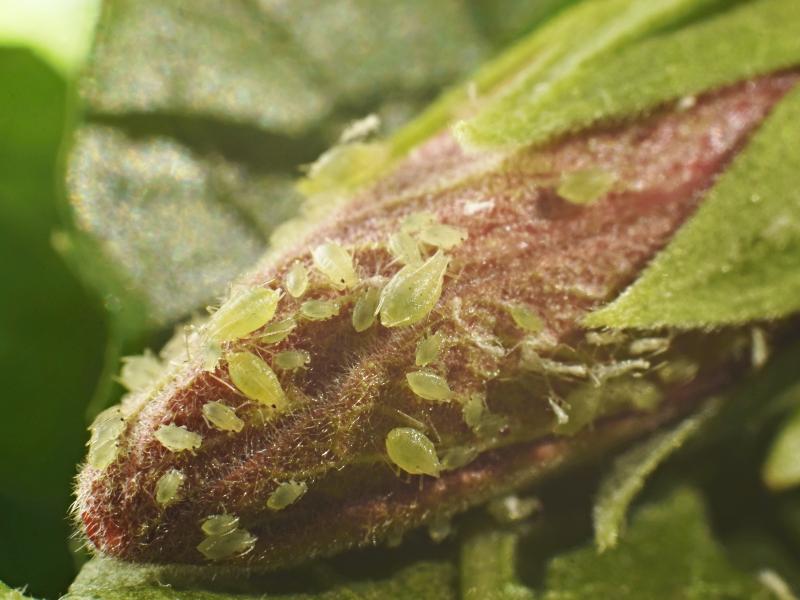
Severe pest infestations pose a significant threat to your hibiscus plant. They can easily and quickly kill your plant, and you must treat them in the early stages.
Some pests that attack hibiscus plants include aphids, spider mites, whiteflies, thrips, mealybugs, and scale.
Some indicators of a plant infested with pests include webbing, black or red spots, browning, wilting, and yellow leaves. These signs will vary depending on the pests you are dealing with.
Let’s dive into the details of how to treat pests that affect hibiscus plants.
Aphids
Aphids are small, soft-bodied insects that create a mottled appearance on the hibiscus plant foliage by sucking juices from plant parts.
These insects live in colonies; you can see them in rows on the flower buds and hibiscus stems.
They come in different colors, including green, black, white, or red.
Wondering how you’ll know if your hibiscus plant is attacked by aphids? Look for ants! Aphids excrete honeydew which ants love. Honeydew may also cause sooty mold to develop.
Aphids tend to rapidly increase in population when left untreated, which could cause severe damage.
Other indicators of an aphid infestation include deformed, yellowing, and curling leaves.
Treating an Aphid Infestation
Insecticidal soap is one of the best ways to deal with pests during flowering. There are many great types of insecticidal soap available on the market. Still, you have to be careful with their application and dosage.
Use a garden hose to wash the plant’s leaves before using any product. This will significantly decrease the number of aphids on your hibiscus plant.
Another ingenious strategy for dealing with these pesky pests is buying beneficial insects like ladybugs and lacewings.
Whiteflies
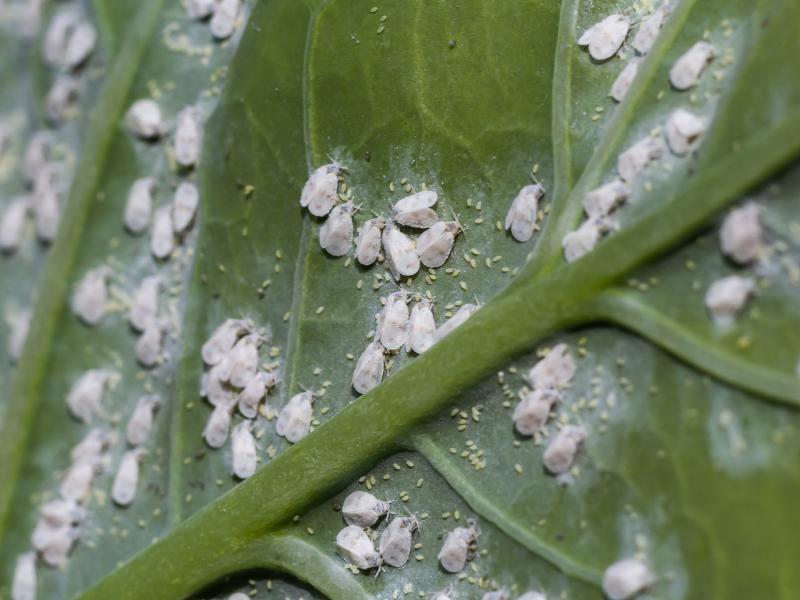
Hibiscus plants are usually attacked by three types of whiteflies:
- Silverleaf whitefly
- Sweet potato whitefly
- Greenhouse whitefly (glasshouse whitefly)
These white, gnat-sized pests typically feed on plant fluids from the underside of the leaves. You can spot them by shaking your hibiscus plant; you’ll see a cloud of them! Whiteflies can tolerate the winter outdoors in zone 7 and above.
They cause the dropping off, shriveling, and yellowing of hibiscus leaves. Whiteflies also excrete honeydew, causing a sooty mold.
Treating a Whiteflies Infestation
Yellow fly traps are an effective method of controlling these pests. Place the traps on the soil or near the plant, and they’ll take care of the rest.
Another way of eradicating whiteflies is by pouring vinegar into a shallow dish and adding some drops of dish soap. This is relatively simple and very efficient.
You can also put an overripe fruit in a shallow dish instead of vinegar and dish soap. Wrap the dish with a plastic bag and poke some holes in it.
Spider Mites
Spider mites are very tiny creatures that are difficult to spot with the naked eye. Webbing in leaf axils and branch crotches is a common indicator of a spider mite infestation. Shake a branch of your plant over a sheet of paper or use a magnifying glass to spot them.
These pests also cause mottled leaves by removing fluids from them. Hibiscus foliage withers and dies if the infestation is severe, but with the proper treatment, your plant will survive.
Spider mites also lay eggs in plant soil, which poses a considerable problem. Therefore, you’ll need to treat the whole plant if infested.
Getting rid of spider mites basically solves the problem since mature spider mites can’t survive without plants.
Treating a Spider Mite Infestation
Neem oil is a popular solution for most growers dealing with a spider mite infestation. It’s a natural product that doesn’t have any chemical compounds. Hence your plant and its roots will be safe.
Other options you can opt for include insecticides, rubbing alcohol, or insecticidal soap.
Thrips
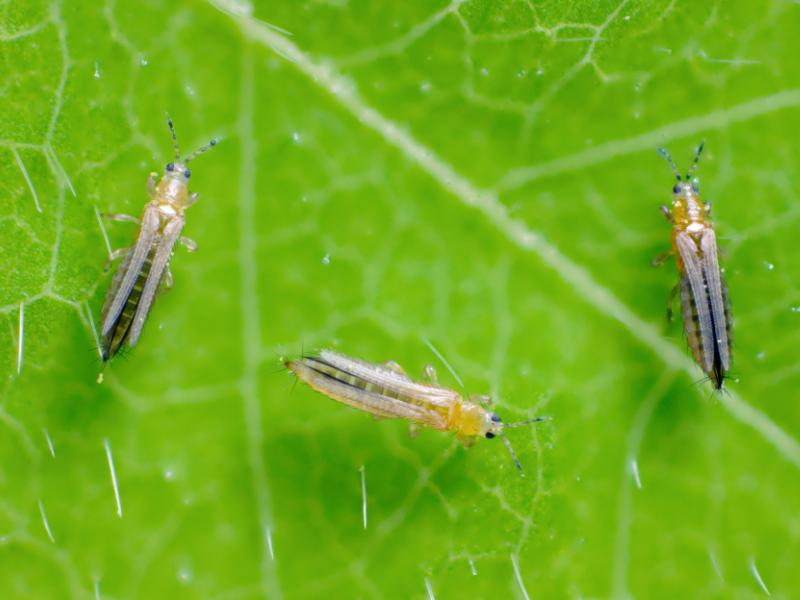
Bud drop is one of the most significant indicators that your hibiscus plant has thrips. This is because the adults lay eggs on the plant’s flower buds, and the larvae feed on it. The buds of your hibiscus plant will change color and drop off even before flowering.
Another sign of thrips is scratches on your plant’s flowers and leaves.
Treating a Thrip Infestation
Neem oil and insecticidal soap are ideal natural solutions against thrips. Observe the hibiscus plant and apply the remedies all over your plant.
Thrips are excellent at hiding. Therefore, ensure you spray the undersides of your hibiscus leaves as well.
You can resort to pest control products like Spinosad if the insects are difficult to eliminate with other methods.
Ensure you pay attention to application and dosage when using chemical products.
Scale
Scales resemble small, brown, or black raised dots on plants. Adult female scales can reside in one area their whole life; they don’t move! Their children, on the other hand, move briefly after hatching and begin laying eggs once they’ve found a place to settle.
When the infestation is severe, you can see these pests with the naked eye. They suck out the sap from your plants and steal essential nutrients.
Similar to other hibiscus pests, scales also encourage fungus growth and produce honeydew, which creates a blackish mold.
Treating a Scale Infestation
Isolating your hibiscus plant is the first step in treating a scale infestation. This obviously works for potted plants only.
Scraping is usually followed; you should try to scrape off as many pests as possible.
Cut off the most affected leaves if the infestation is severe.
Other excellent methods of treating scale infestations include insecticidal soap, isopropyl alcohol, and neem oil.
You can treat your hibiscus with pesticides if none of the above methods work.
Note: Insecticidal sprays can’t penetrate the armored shell of scales, making them ineffective. As such, look for systemic insecticides to control scale infestations.
Mealybugs
Mealybugs are white, soft-bodied pests that frequently attack the Peach hibiscus or the Hibiscus rosa-sinensis.
They feed on plant fluids, preventing flowers from opening and causing stunted growth. They also encourage the development of sooty mold since they produce honeydew. You can see them in crotches of stems and branches and at bud and leaf axils.
Treating a Mealybug Infestation
Rubbing the leaves with a soft sponge dipped in rubbing alcohol is one of the easiest methods to treat mealybugs.
Other solutions to kill these annoying pests include horticultural oils or insecticidal soap.
Preventing Hibiscus Plant Diseases And Pest Infestation
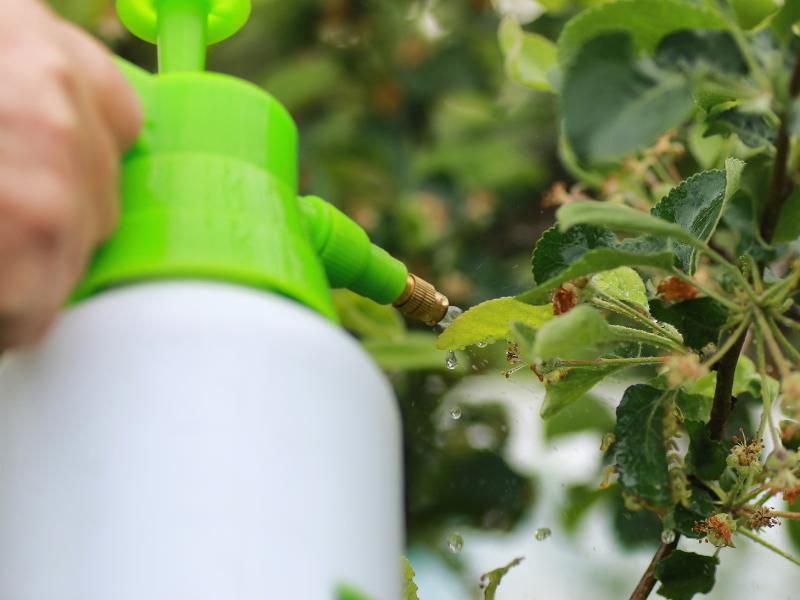
Hibiscus plants are an excellent addition to any outdoor or indoor setting. Hibiscus tea has numerous nutritional benefits, and the plant attracts hummingbirds and smells fantastic.
You won’t have to worry much about diseases and pests if you properly care for your hibiscus.
In this section, we’ll discuss tips to prevent your hibiscus from being attacked or infected by pests and diseases.
1 Light: Hibiscus plants need a lot of sun to thrive, but a bit of shade can be beneficial, especially in places with warm climates. Place your hibiscus near a sunny window if you plan on growing it indoors for optimal results.
2. Humidity: Hibiscus plants love high humidity levels. We recommend growing hibiscus indoors if you live in a highly arid area. This way, you can maintain and control the correct humidity level easily.
3. Watering: All hibiscus species flourish in moist soil, so frequent watering is crucial, mainly when potted plants are involved. Avoid watering these plants too often if you are growing them in-ground. Only add water when it doesn’t rain for a while.
4. Temperature: A tropical hibiscus will thrive between 60-85℉. In contrast, hardy hibiscus varieties can tolerate extremely low temperatures up to -20℉.
5. Soil: Well-aerated and properly draining soil is ideal for hibiscus plants and will prevent many problems. Add perlite to your soil to improve air circulation.
6. Feeding: Plant foods with high concentrations of minerals like potassium and nitrogen are ideal for these flowering plants. Use a liquid fertilizer for indoor plants and a slow-release fertilizer for outdoor plants.
7. Pruning: Hibiscus plants usually display new growth in spring. As such, we recommend cutting the plants at the beginning of spring or in late winter. You can also encourage new growth by deadheading spent flowers and removing discolored or damaged leaves.
8. Transplanting/repotting: Place your hibiscus seedlings outdoors to adapt to the environment and avoid transplant shock. Ensure you repot your hibiscus in a larger pot with fresh soil when it becomes root bound if you grow it in containers.
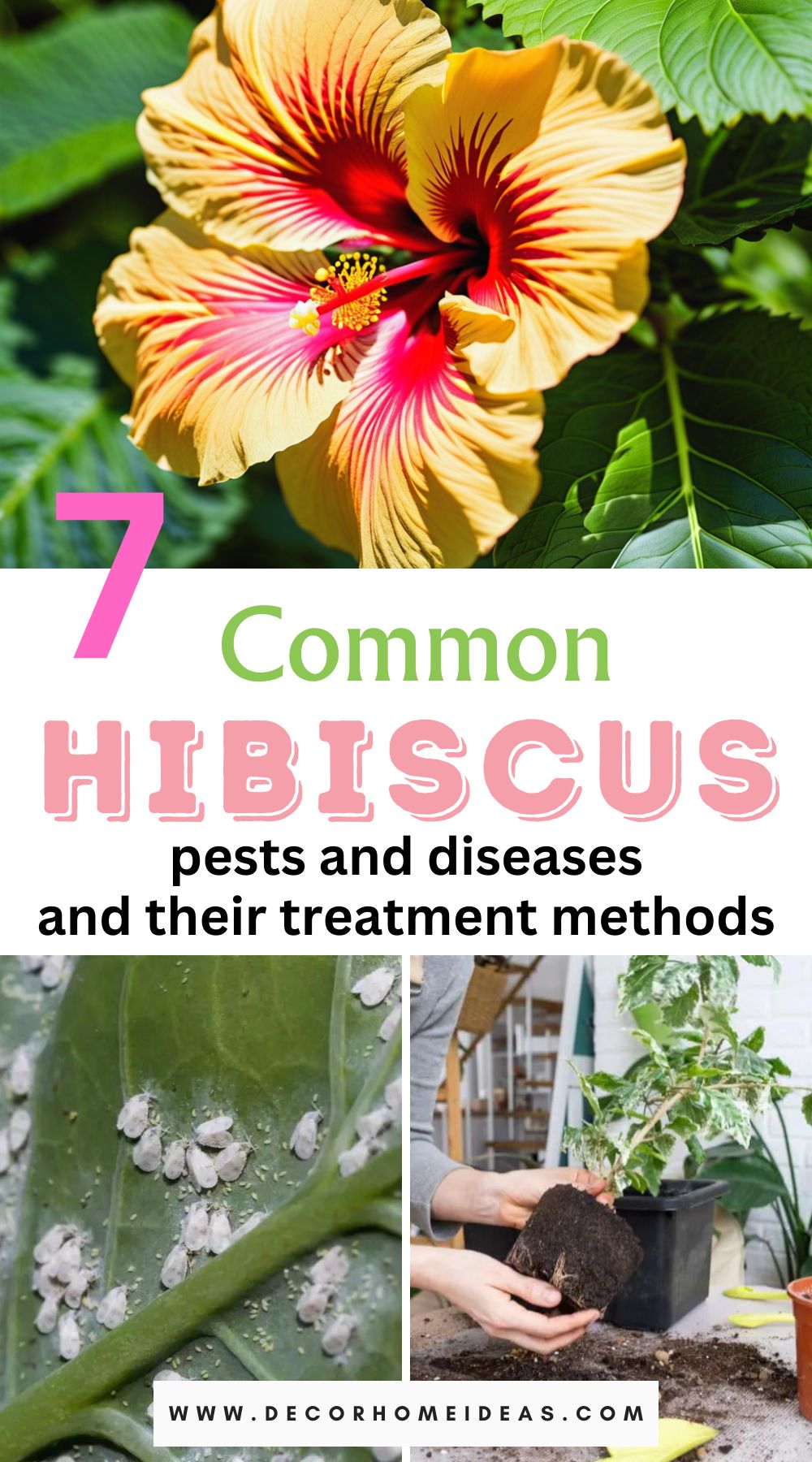
Final Thoughts
The thrill that comes with growing hibiscus plants is like no other. These plants are relatively easy to care for and have numerous health benefits. Additionally, their flowers will liven any dull place you place them in.
Like every living creature, plants also face problems. The faster you start treating issues affecting your hibiscus plants, the sooner they recover.
We discussed 7 common hibiscus pests and diseases, how to identify them, and their remedies.
You can quickly solve these problems by following our advice.

